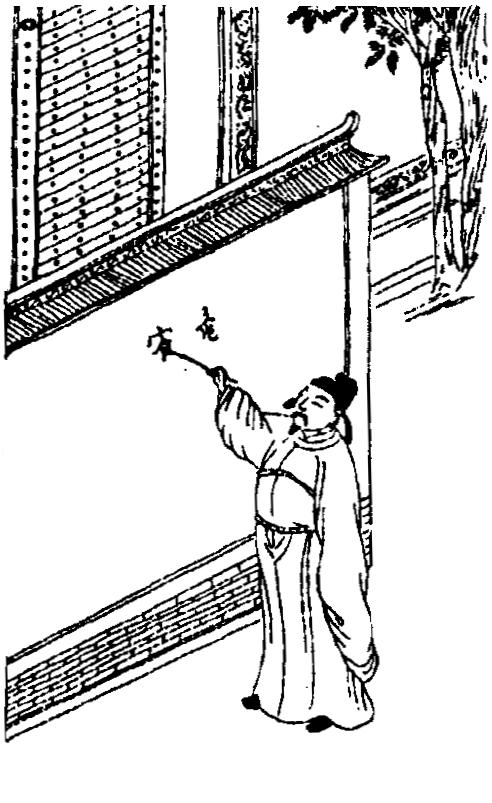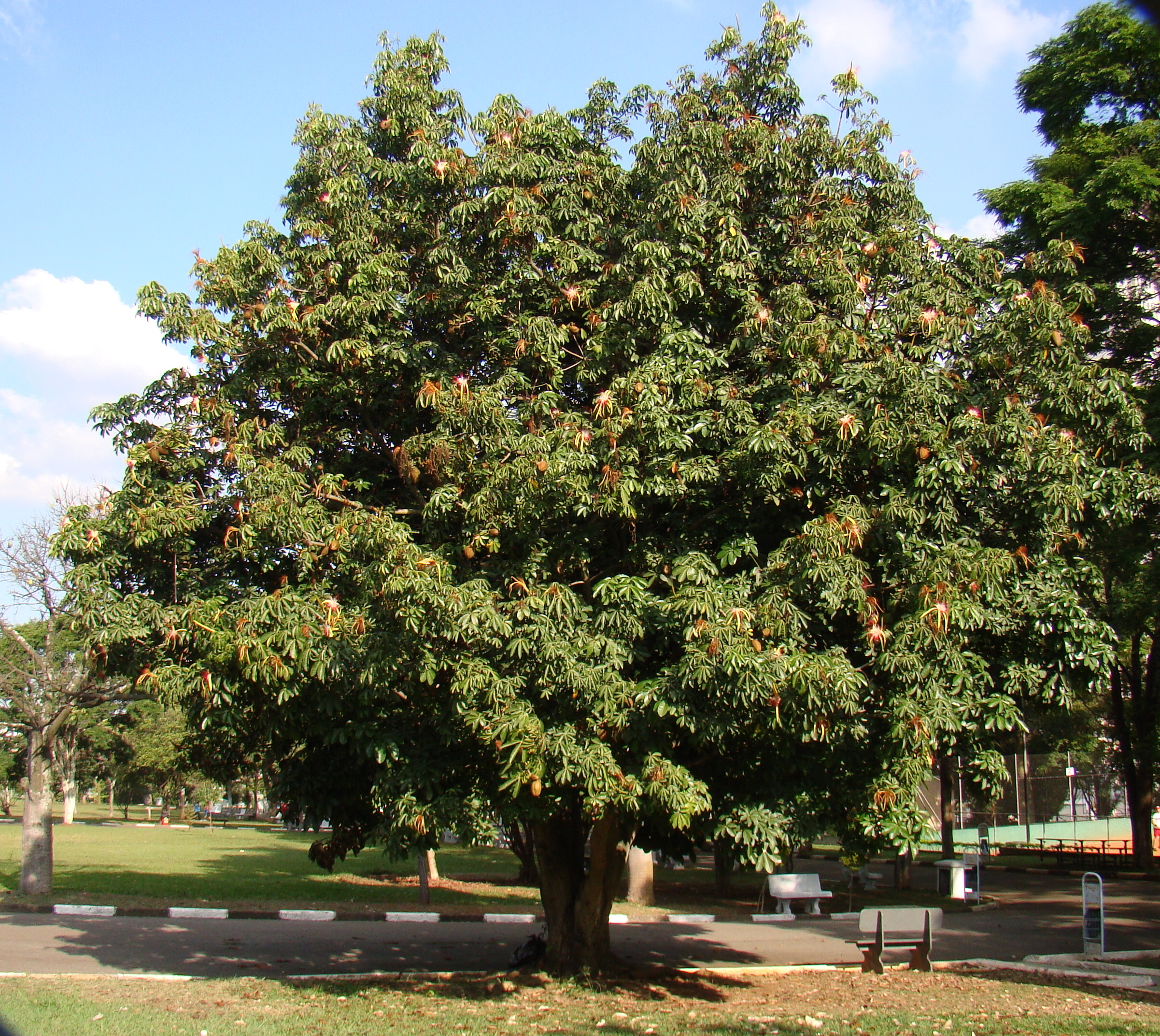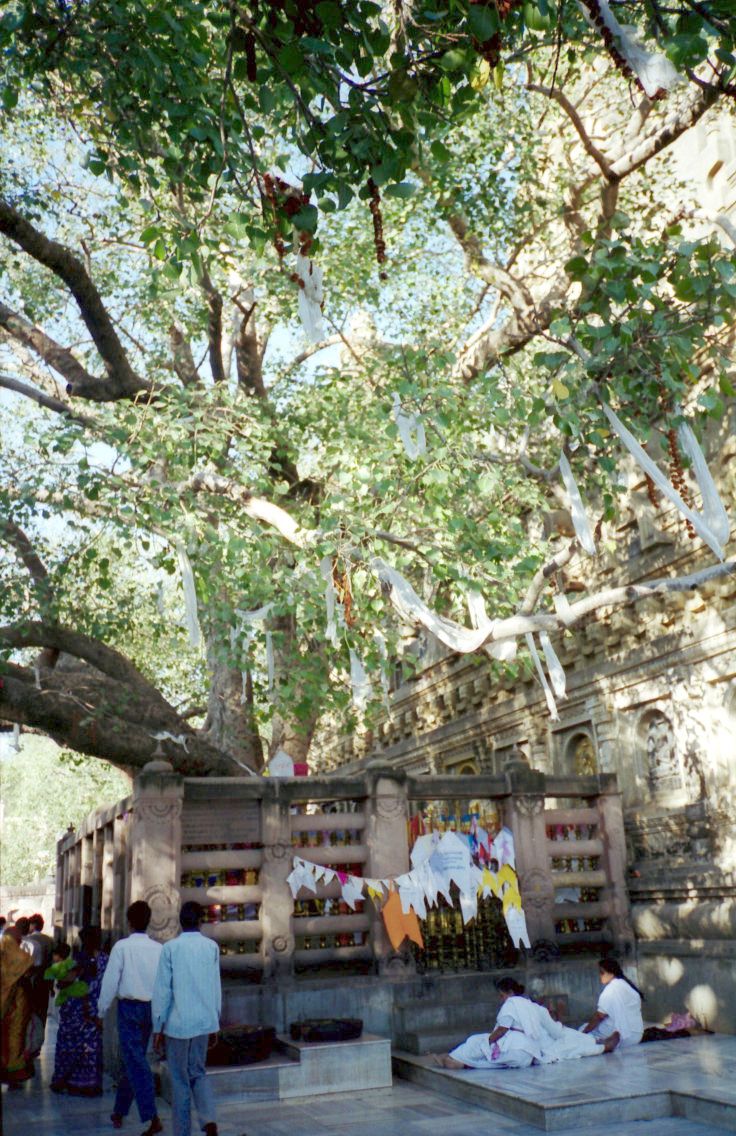|
Money Tree (myth)
Chinese legend has it that the money tree ( 搖錢樹) is a type of holy tree that can bring money and fortune to the people, and that it is a symbol of affluence, nobility and auspiciousness. It can be traced back to primitive societies when the adoration of a holy tree was prevalent. Whilst Money trees may be derived from the Sun tree myth associated with paradise, the coins link paradise with a material bounty in this world. According to the existing historical narratives, the concept of the "money tree" is derived at the latest from the Han Dynasty. Cast-bronze money trees are a conspicuous feature of Han tombs in Sichuan. Archaeology Money trees have been excavated by archaeologists from Han tombs in western China in and near Sichuan Province, an indication that the adoration of the money tree was prevalent in the Han Dynasty. Appearance They are made from bronze and green-glazed earthenware. Money trees are decorated with scenes of paradise containing magical creatures and ... [...More Info...] [...Related Items...] OR: [Wikipedia] [Google] [Baidu] |
Han Money Tree
Han may refer to: Ethnic groups * Han Chinese, or Han People (): the name for the largest ethnic group in China, which also constitutes the world's largest ethnic group. ** Han Taiwanese (): the name for the ethnic group of the Taiwanese people who may be fully or partially Han Chinese descent. * Han Minjok, or Han people (): the Korean native name referring to Koreans. * Hän: one of the First Nations peoples of Canada. Former states * Han (Western Zhou state) (韓) (11th century BC – 757 BC), a Chinese state during the Spring and Autumn period * Han (state) (韓) (403–230 BC), a Chinese state during the Warring States period * Han dynasty (漢/汉) (206 BC – 220 AD), a dynasty split into two eras, Western Han and Eastern Han ** Shu Han (蜀漢) (221–263), a Han Chinese dynasty that existed during the Three Kingdoms Period * Former Zhao (304–329), one of the Sixteen Kingdoms, known as Han (漢) before 319 * Cheng Han (成漢) (304–347), one of the Sixte ... [...More Info...] [...Related Items...] OR: [Wikipedia] [Google] [Baidu] |
Holy Tree
A sacred tree is a tree which is considered to be sacred, or worthy of spiritual respect or reverence. Such trees appear throughout world history in various cultures including the ancient Greek, Hindu mythology, Celtic and Germanic mythologies. They also continue to hold profound meaning in contemporary culture in places like Japan (''shinboku''), Korea (''dangsan namu''), India (bodhi tree), and the Philippines, among others. Tree worship is core part of religions which include aspects of animism as core elements of their belief, which is the eco-friendly belief that trees, forests, rivers, mountains, etc have a life force ('anime' i.e. ''alive'') and need to be conserved and used in a sustainable manner. An example of the continued importance of sacred trees in contemporary urban culture is the 700-year old camphor growing in the middle of Kayashima Station. Locals protested against moving the tree when the railway station had to be expanded, so the station was built around ... [...More Info...] [...Related Items...] OR: [Wikipedia] [Google] [Baidu] |
Han Dynasty
The Han dynasty (, ; ) was an imperial dynasty of China (202 BC – 9 AD, 25–220 AD), established by Liu Bang (Emperor Gao) and ruled by the House of Liu. The dynasty was preceded by the short-lived Qin dynasty (221–207 BC) and a warring interregnum known as the ChuHan contention (206–202 BC), and it was succeeded by the Three Kingdoms period (220–280 AD). The dynasty was briefly interrupted by the Xin dynasty (9–23 AD) established by usurping regent Wang Mang, and is thus separated into two periods—the Western Han (202 BC – 9 AD) and the Eastern Han (25–220 AD). Spanning over four centuries, the Han dynasty is considered a golden age in Chinese history, and it has influenced the identity of the Chinese civilization ever since. Modern China's majority ethnic group refers to themselves as the "Han people", the Sinitic language is known as "Han language", and the written Chinese is referred to as "Han characters". The emperor was at the pinnacle of ... [...More Info...] [...Related Items...] OR: [Wikipedia] [Google] [Baidu] |
Modern Money Tree
Modern may refer to: History *Modern history ** Early Modern period ** Late Modern period *** 18th century *** 19th century *** 20th century ** Contemporary history * Moderns, a faction of Freemasonry that existed in the 18th century Philosophy and sociology * Modernity, a loosely defined concept delineating a number of societal, economic and ideological features that contrast with "pre-modern" times or societies ** Late modernity Art * Modernism ** Modernist poetry * Modern art, a form of art * Modern dance, a dance form developed in the early 20th century * Modern architecture, a broad movement and period in architectural history * Modern music (other) Geography *Modra, a Slovak city, referred to in the German language as "Modern" Typography * Modern (typeface), a raster font packaged with Windows XP * Another name for the typeface classification known as Didone (typography) * Modern, a generic font family name for fixed-pitch serif and sans serif fonts (for examp ... [...More Info...] [...Related Items...] OR: [Wikipedia] [Google] [Baidu] |
Cash Cow
Cash cow, in business jargon, is a venture that generates a steady return of profits that far exceed the outlay of cash required to acquire or start it. Many businesses attempt to create or acquire such ventures, since they can be used to boost a company's overall income and to support less profitable endeavors. The term cash cow is a metaphor for a dairy cow used on farms to produce milk, offering a steady stream of income with little maintenance. Cash cows are products or services that have achieved market leader status, provide positive cash flows and a return on assets (ROA) that exceeds the market growth rate. The idea is that such products produce profits long after the initial investment has been recouped. By generating steady streams of income, cash cows help fund the overall growth of a company, their positive effects spilling over to other business units. Furthermore, companies can use them as leverage for future expansions, as lenders are more willing to lend money kn ... [...More Info...] [...Related Items...] OR: [Wikipedia] [Google] [Baidu] |
Liu Haichan
Liu Haichan was a ( 10th century) Daoist '' xian'' ("transcendent; immortal") who was a patriarch of the Quanzhen School, and a master of ''neidan'' "internal alchemy" techniques. Liu Haichan is associated with other Daoist transcendents, especially Zhongli Quan and Lü Dongbin, two of the Eight Immortals. Traditional Chinese and Japanese art frequently represents Liu with a string of square-holed cash coins and a mythical three-legged ''chanchu'' (; "toad; toad in the moon"). In the present day, it is called the '' Jin Chan'' (), literally meaning "Money Toad", and Liu Haichan is considered an embodiment of Caishen, the God of Wealth. Names Liu Haichan is known by many names. Liu 劉 is a common Chinese family name, notably for the Han dynasty imperial family. Haichan combines ''hǎi'' 海 "sea; ocean; huge group (of people/things)" and ''chán'' 蟾 "toad", used in the compound ''chánchú'' 蟾蜍 (蟾諸 or 詹諸) "toad; fabled toad in the moon". One source, the (early ... [...More Info...] [...Related Items...] OR: [Wikipedia] [Google] [Baidu] |
Bunga Mas
The bunga emas dan perak ( "golden and silver flowers", th, ต้นไม้เงินต้นไม้ทอง ), often abbreviated to bunga mas ( Jawi: "golden flowers"), was a tribute sent every three years to the king of Ayutthaya (Siam) from its vassal states in the Malay Peninsula, in particular, Kelantan, Kedah, Pattani, Nong Chik, Yala, Rangae,Cyril Skinner (1983). ''A Malay Mission to Bangkok during the reign of Rama II'', Journal of the Malaysian Branch of the Royal Asiatic Society/ref> Kubang Pasu Darul Qiyam, Kubang Pasu and Setul. The tribute consisted of two small trees made of gold and silver, plus costly gifts of weapons, goods and slaves. Leonard Y. Andaya, Barbara Watson Andaya (1984). ''A History of Malaysia'', pp.65-68/ref> There are several supposed origins of and reasons for the establishment of the tradition: * According to a Kedah source, the first time a ''bunga mas'' was sent, it was sent as a toy for a new-born Thai prince who was the gr ... [...More Info...] [...Related Items...] OR: [Wikipedia] [Google] [Baidu] |
Pachira Aquatica
''Pachira aquatica'' is a tropical wetland tree in the mallow family Malvaceae, native to Central and South America where it grows in swamps. It is known by its common names Malabar chestnut, French peanut, Guiana chestnut, Provision tree, Saba nut, Monguba (Brazil), Pumpo (Guatemala) and is commercially sold under the names Money tree and Money plant. This tree is sometimes sold with a braided trunk and is commonly grown as a houseplant, although more commonly what is sold as a "Pachira aquatica" houseplant is in fact a similar species, '' P. glabra''. The genus name is derived from a language spoken in Guyana.Helmut Genaust (1983): Etymologisches Wörterbuch der botanischen Pflanzennamen, 2. Auflage. Birkhäuser Verlag – The species name is Latin for "aquatic". It is classified in the subfamily Bombacoideae of the family Malvaceae. Previously it was assigned to Bombacaceae. The name "money tree" is believed to refer to a story of its origin, in which a poor man prayed for mon ... [...More Info...] [...Related Items...] OR: [Wikipedia] [Google] [Baidu] |
Chinese Mythology
Chinese mythology () is mythology that has been passed down in oral form or recorded in literature in the geographic area now known as Greater China. Chinese mythology includes many varied myths from regional and cultural traditions. Much of the mythology involves exciting stories full of fantastic people and beings, the use of magical powers, often taking place in an exotic mythological place or time. Like many mythologies, Chinese mythology has in the past been believed to be, at least in part, a factual recording of history. Along with Chinese folklore, Chinese mythology forms an important part of Chinese folk religion. Many stories regarding characters and events of the distant past have a double tradition: ones which present a more historicized or euhemerized version and ones which present a more mythological version. Many myths involve the creation and cosmology of the universe and its deities and inhabitants. Some mythology involves creation myths, the origin of things, ... [...More Info...] [...Related Items...] OR: [Wikipedia] [Google] [Baidu] |
Trees In Mythology
Trees are significant in many of the world's mythologies, and have been given deep and sacred meanings throughout the ages. Human beings, observing the growth and death of trees, and the annual death and revival of their foliage, have often seen them as powerful symbols of growth, death and rebirth. Evergreen trees, which largely stay green throughout these cycles, are sometimes considered symbols of the eternal, immortality or fertility. The image of the Tree of life or world tree occurs in many mythologies. Examples include the banyan and the sacred fig (''Ficus religiosa'') in Hinduism, Buddhism and Jainism, the tree of the knowledge of good and evil of Judaism and Christianity. In folk religion and folklore, trees are often said to be the homes of tree spirits. Germanic mythology as well as Celtic polytheism both appear to have involved cultic practice in sacred groves, especially grove of oak. The term ''druid'' itself possibly derives from the Celtic word for oak. The Egyp ... [...More Info...] [...Related Items...] OR: [Wikipedia] [Google] [Baidu] |
Luck
Luck is the phenomenon and belief that defines the experience of improbable events, especially improbably positive or negative ones. The naturalistic interpretation is that positive and negative events may happen at any time, both due to random and non-random natural and artificial processes, and that even improbable events can happen by random chance. In this view, the epithet "lucky" or "unlucky" is a descriptive label that refers to an event's positivity, negativity, or improbability. Supernatural interpretations of luck consider it to be an attribute of a person or object, or the result of a favorable or unfavorable view of a deity upon a person. These interpretations often ''prescribe'' how luckiness or unluckiness can be obtained, such as by carrying a lucky charm or offering sacrifices or prayers to a deity. Saying someone is "born lucky" may hold different meanings, depending on the interpretation: it could simply mean that they have been born into a good family or ... [...More Info...] [...Related Items...] OR: [Wikipedia] [Google] [Baidu] |







